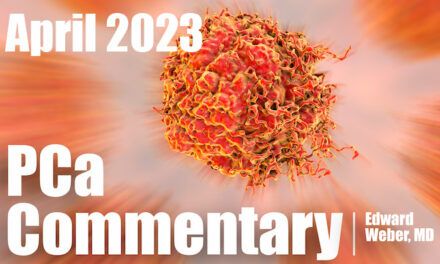Kelvin A. Moses, MD, PhD, FACS, presented “NCCN Guidelines for Treatment of Localized Prostate Cancer” during the 6th Global Summit on Precision Diagnosis and Treatment of Prostate Cancer on September 22, 2022.
How to cite: Moses, Kelvin A. “NCCN Guidelines for Treatment of Localized Prostate Cancer.” September 23, 2022. Accessed Oct 2024. https://grandroundsinurology.com/nccn-guidelines-for-treatment-of-localized-prostate-cancer/
NCCN Guidelines for Treatment of Localized Prostate Cancer – Summary
Kelvin A. Moses, MD, PhD, FACS, Associate Professor of Urology and Director of Comprehensive Cancer Clinic at Vanderbilt University Medical Center in Nashville, Tennessee and Chair of the National Comprehensive Cancer Network (NCCN) Guidelines Panel for Prostate Cancer Early Detection, discusses updated NCCN Guidelines for treatment of localized prostate cancer. Dr. Moses reviews the NCCN initial risk-stratification and staging workup for clinically localized disease, including clinical/pathological features, additional evaluation, and initial therapy across various risk groups. Recommended initial treatments include active surveillance (AS) for very-low-risk and low-risk patients. AS, external-beam radiation therapy (EBRT)/brachytherapy, radical prostatectomy, and observation are recommended for patients with favorable intermediate-risk disease, (depending on life expectancy). For unfavorable intermediate-risk disease, the guidelines recommend EBRT with androgen deprivation therapy (ADT) (4-6 months), radical prostatectomy with pelvic lymph node dissection (PLND) if risk of lymph node metastasis is ≥two percent, or observation (for men with low survival expectancy). Multi-modality therapy (e.g., EBRT + 1.5-3 year ADT + docetaxel [for very high risk disease] or EBRT+brachytherapy+ADT), radical prostatectomy with PLND, or observation (asymptomatic with a low survival expectancy) are recommended for high- and very-high-risk disease. Dr. Moses then summarizes the 2022 guideline changes, including that Ga-68 PSMA-11 or F-18 piflufolastat PSMA PET/CT or PET/MRI can be considered for bone and soft tissue imaging, and the addition of EBRT+ADT+abiraterone acetate for high- or very-high risk groups. Additionally, the panel recommends the use of nomograms and consideration of various demographic and clinical factors to individualize the treatment discussion. Dr. Moses notes that all treatment modalities have specific risks, nomograms can help employ risk-adapted treatment strategies, and optimal patient selection paired with shared decision-making leads to the best patient outcomes.
The annual symposium on Frontiers in Oncologic Prostate Care and Ablative Local Therapy (FOCAL) is an outstanding program on prostate imaging, transperineal interventions, and ablative treatments for prostate cancer and benign prostatic hyperplasia. Bringing together community-based, academic, and industry partners, FOCAL offers lectures by world-renowned faculty and hands-on training workshops on in-office transperineal interventions, fusion-guided prostate ablation and state-of-the-art BPH management with novel technologies. For more educational activities from the symposium that took place from September 23-24, 2022 in Los Angeles, California, visit our collection page.
ABOUT THE AUTHOR
Dr. Kelvin A. Moses is Associate Professor of Urology at Vanderbilt University Medical Center, and director of the Comprehensive Prostate Cancer clinic. He is a Phi Beta Kappa graduate of Morehouse College, and received his MD and PhD training at Baylor College of Medicine in Houston, TX. He completed his General Surgery internship and Urology training at Emory University, followed by a fellowship in Urologic Oncology at Memorial Sloan-Kettering Cancer Center, where he served as Chief Administrative Fellow. His clinical practice focuses on advanced prostate cancer, including several clinical trials, as well as surgical management of advanced renal, penile, and testicular cancer. Dr. Moses’s research is focused on addressing health disparities in urologic cancers, determining the role of health literacy in patient interactions with the health care system, and optimal care for patients with metastatic and/or castrate-resistant prostate cancer.



